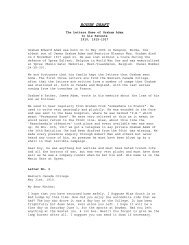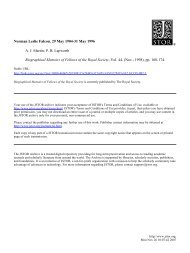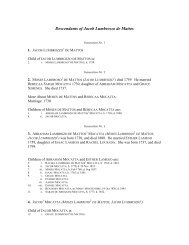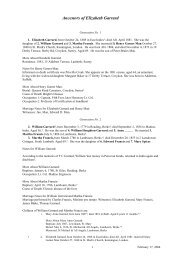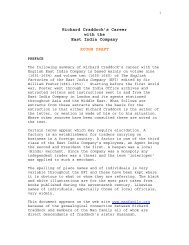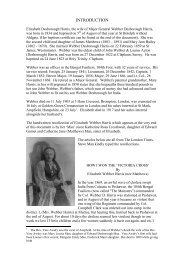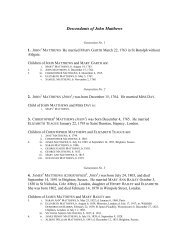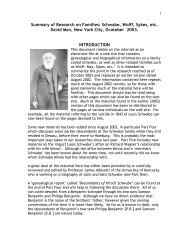Original - The MAN & Other Families
Original - The MAN & Other Families
Original - The MAN & Other Families
- No tags were found...
Create successful ePaper yourself
Turn your PDF publications into a flip-book with our unique Google optimized e-Paper software.
32 <strong>The</strong> Ancient Stone Crossessubstantial granite building erected forthe accommodation ofthe Orphan Girls' School, founded by Dame Hannah Rogers,we shall soon reach a part of the road that runs parallel to therailway for a short distance. As we proceed we shall noticeon our left some buildings a littleway down the hill ;these arethe kennels of the Dartmoor hounds. Below them is Woodlands,a hamlet on the old Plymouth road, of which, accordingto Risdon, there were anciently lords bearing the same name,one of them Walter Woodland being servitor to the BlackPrince. After passing the lane that leads down to this placewe shall, at the distance of about three quarters of a mile,reach a small wood, which the road we are pursuing skirts fora hundred yards or so. From this a little rivulet issues, theroadway being carried over itby a bridge formed by stonesbeing laid across its channel, but it is only of small size. Itis known locally as Potsans Bridge, and though insignificantin itself, has yet some interest attaching to it, for it was herethat the inscribed stone, generally referred to as the FardleStone, was found.Its position in the bridge was at the lower end, a circumstanceto which it owes its preservation, for had it been placedin the centre, it would either have been covered entirely bythe road metalling, and so never have been discovered, or bybeing in the way of the traffic have suffered injury. It wastaken from the bridge to Fardle farm-court, whence it wasafterwards removed to the British Museum, through theinstrumentalityof Sir Edward Smirke. It is a matter forcongratulation that so interesting a stone has been preserved,but at the same time one cannot but feel that it would havebeen more satisfactory had steps been taken to effect thiswithout removing it far from the spot on which it was found.<strong>The</strong> stone, which Sir Edward described in an article in theTransactions of the Royal Institution of Cornwall, in 1861, is saidto be six feet three inches in length, two feet ten inches inbreadth, and to have a thickness of about seven inches.<strong>The</strong> inscriptions upon this stone have been variously read.One side is said to bear the word Sagranui, and the otherFanoni Maqvinni* both in the Roman character, while along* <strong>Other</strong> renderings are Sagramni, and Sapaiini, and in the secondname Maqvisuii. <strong>The</strong> Maq is equivalent to Mac, "the son of."



